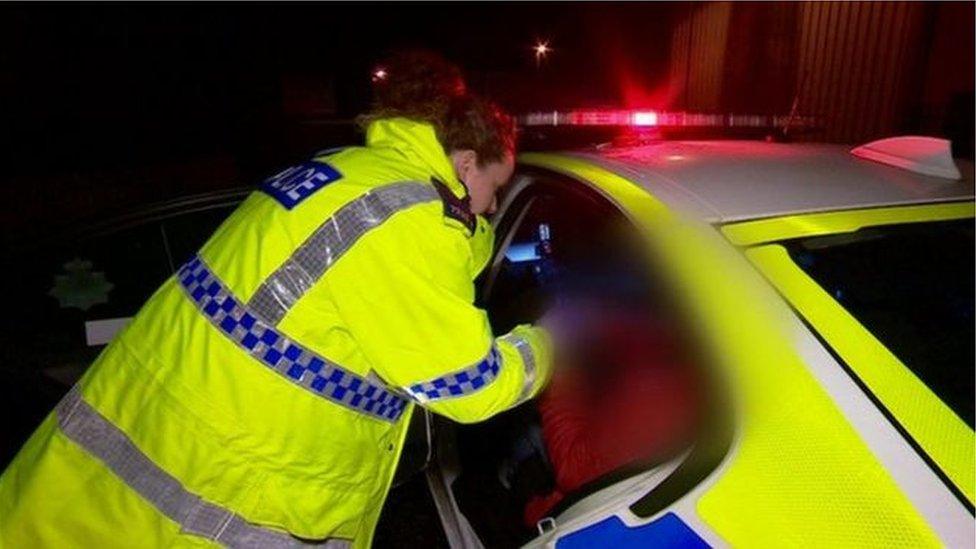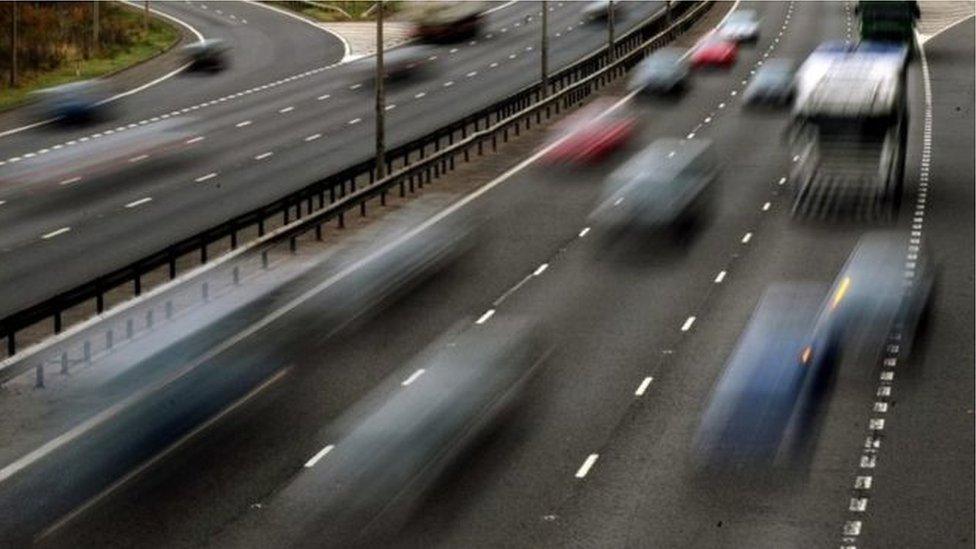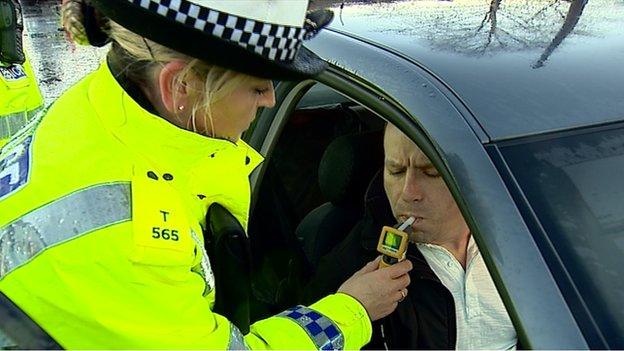Drug-driving limits and roadside testing to be introduced
- Published
The Scottish government and the police are now looking at which drugs need to be included
Drug-driving limits and roadside testing will be introduced in Scotland in 2019, the Scottish government has confirmed.
It follows the government's 2014 move to cut the drink-drive limit from 80mg to 50mg in every 100ml of blood.
England and Wales introduced drug-driving limits and roadside testing two years ago.
The Scottish government has previously been criticised for not implementing the same regulations.
Justice Secretary Michael Matheson told BBC Scotland he wanted the new drink-drive limits to bed in before introducing drug testing.
Currently in Scotland, it is illegal to drive if impaired by drugs - whether they are prescription drugs or illegal substances like cocaine.
But under the changes, there would be specific limits for certain drugs - as there is with alcohol - and a zero tolerance approach to others.
The aim is to make it quicker and easier to hold drug-drivers to account as it would remove the requirement to prove that someone was driving in an impaired manner.

How the test works

The law introduced in England and Wales two years ago set low limits for eight illegal drugs, including cannabis and cocaine, and higher levels for eight prescription drugs, including morphine and methadone.
Those using prescription drugs within recommended amounts are not penalised.
Under the legislation, officers can use "drugalysers" to check for cannabis and cocaine. The testing kit uses a mouth swab to check for the presence of drugs and a blue line appears after eight minutes if the person has taken them.
Drivers have to be taken to a police station for a blood test for other drugs including ecstasy, LSD, ketamine and heroin. Officers can do this even if a driver passes the roadside check.

Currently, when police suspect a motorist of drug-driving, they carry out the roadside "field impairment test".
If the individual fails this, they can be arrested and taken to a police station where a doctor must certify that the person is impaired to the extent that they are unfit to drive.
A driver will then be asked to provide a blood sample.
But this process can be lengthy. The impairment test alone takes between 10 and 15 minutes to complete.
In the first year after 2015 when forces in England and Wales introduced roadside drugalysers - which test saliva for cannabis and cocaine - nearly 8,000 people were arrested for drug-driving.
The Scottish Conservatives and safety campaigners have criticised the Scottish government for not introducing the tests sooner.
Enhanced powers
Mr Matheson said: "This government prioritised lowering the drink-driving limit in 2014 with evidence showing greater numbers of lives lost on our roads due to drink-driving than drug-driving.
"With the lower blood-alcohol limit well established, I want to give our law enforcement agencies enhanced powers to tackle drug-driving and so make our roads even safer.
"While it is a long-standing offence to drive while impaired by drugs, by introducing new drug-driving limits and roadside testing for the presence of drugs, we will strengthen the ability of our police and prosecutors to tackle the minority of drivers who recklessly put other road-users and themselves at risk."
He added: "Under the new offence, evidence of impaired driving will not be required with our law enforcement agencies instead able to investigate and prosecute on the basis of a driver being above the specified limits for individual drug types.
"Subject to Parliament's agreement and once the new regime is in force, Scotland will be at the forefront of efforts across the UK to tackle drivers who either drink or take drugs - with both the lowest drink-drive limit operating in these islands and drug-driving limits in place."
The Scottish government and others, including the police, are now looking at which drugs need to be included and what the best test and technology would be.

Insp Brian Poole, of Police Scotland, said officers would welcome any move to make Scotland's roads safer.
"The impairment test is a valuable tool," he said. "The downside is that not all police officers in Scotland are trained in its use. It's mainly road safety officers.
"In addition, it takes 10-15 minutes and we have to find a suitable place for it to take place.
"Clearly the middle of a motorway is not suitable. We potentially have to take someone away to somewhere more suitable - which we are entitled to do but there are issues around time."
He added: "Taking alcohol or drugs and getting behind the wheel is clearly very risky. Anything we can do legislatively or educationally to stop that is to be welcomed.
"This is not just about illicit drugs. This is about any drug that impairs your ability to drive. If someone takes the decision to get behind the wheel when not fit to drive, the consequences can be catastrophic."
Current penalties
The introduction of drug-drive limits was among a number of recommendations by Sir Peter North QC in 2010 in his independent report commissioned by the UK government.
Sir Peter said: "I believe that such reforms, when combined with the well-regarded decision to lower the drink-drive limit, will make a major contribution to road safety in Scotland."
The current penalties - reserved to Westminster - include a minimum 12-month driving ban, up to six months in prison and a fine of up to £5,000.
The new offence of driving while above specified drug limits will, when in force, operate alongside the current offence and carry the same maximum penalties.
- Published5 December 2014
